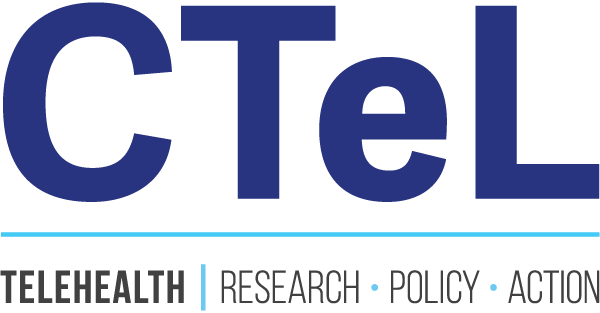Expert Insight: Medicare Funding – A Looming Challenge and Your Strategic Imperatives
As you know, our landscape is constantly shifting, and staying ahead of policy changes is paramount. This morning, the House of Representatives took a significant step, passing H.R.1 - the "One Big Beautiful Bill Act." While much of the initial focus has rightly been on the substantial direct cuts to the Medicaid program – a topic we’ve already dissected in our detailed analysis of the House Energy & Commerce’s portion of the bill which you can find here – there’s a crucial development emerging that demands our immediate attention regarding Medicare.
A recent letter from the Congressional Budget Office (CBO) has provided critical insight into the bill's less overt, but equally impactful, implications for the Medicare program. This analysis indicates nearly $500 billion in potential funding reductions over the next decade (Congressional Budget Office, 2025). This isn't a direct surgical cut in the traditional sense, but rather a consequence of the bill's broader budgetary footprint.
Understanding the Medicare Impact: S-PAYGO and Sequestration Explained
Unlike the direct program reductions seen in Medicaid, the Medicare impact stems primarily from a mechanism designed to manage federal expenditures: the Statutory Pay-As-You-Go Act of 2010 (S-PAYGO).
H.R.1, while introducing policies that aim to update Medicare payment methodologies like conversion factor calculations, is also projected to increase the federal deficit by an estimated $2.3 trillion over the next ten years (Congressional Budget Office, 2025). This substantial projected increase triggers the S-PAYGO rule. Under this law, the Office of Management and Budget (OMB) is mandated to reduce spending on non-exempt mandatory programs, and notably, Medicare falls into this category.
Here’s the practical implication: the CBO projects that an automatic 4% spending cut to Medicare would be triggered after 2026. This is when the OMB would calculate the required sequestration. Their estimates indicate that from 2027 to 2034, approximately $490 billion in Medicare funding would need to be cut to satisfy this requirement (Congressional Budget Office, 2025). Furthermore, the letter highlights a critical detail: even with these maximum allowable Medicare cuts, the OMB would still not have sufficient resources to sequester the full $230 billion per year mandated by this expansive bill.
What This Means for You: Navigating the Road Ahead
These projected sequestration requirements present a significant challenge for an already strained Medicare payment system. For years, we've grappled with payment cuts influenced by outdated budget neutrality requirements, which have, in turn, limited the full potential and adoption of digital health technologies – a critical area for many of our members.
Compounding this, the potential Medicare cuts will exacerbate the effects of the bill's substantial Medicaid reductions. This creates an almost untenable situation, particularly for our essential safety-net providers, including rural hospitals and FQHCs, who serve some of our most vulnerable populations. The integrity of our healthcare delivery system, especially concerning access to care, will be severely tested.
A Crucial Opportunity: Precedent for Prevention
It's important to remember that legislative history offers a pathway forward. Congress has, in the past, acted to prevent such sequestration from impacting Medicare. Previous reconciliation bills, such as the 2017 Tax Cuts and Jobs Act (https://www.congress.gov/bill/115th-congress/house-bill/1) and the 2021 American Rescue Plan (https://www.congress.gov/bill/117th-congress/house-bill/1319), both included specific provisions to exempt Medicare from S-PAYGO requirements (Tax Cuts and Jobs Act, 2017; American Rescue Plan, 2021).
Given that the OMB's "scorecards" for S-PAYGO are calculated at the end of each Congressional session, there remains a critical window: leadership has until the end of 2026 to introduce legislation that would prevent these cuts.
The Immediate Horizon: Action in the Senate
The bill now moves to the Senate, where, as expected, changes are anticipated due to Senate rules governing reconciliation legislation and the need to secure crucial votes. House Speaker Mike Johnson has expressed a desire to see this bill passed by July 4th. This makes the next month and a half an exceptionally critical period for observing, understanding, and potentially influencing the trajectory of this legislation.
As your trusted resource, CTeL will continue to monitor these developments closely, providing you with timely, actionable intelligence to inform your strategic planning and advocacy efforts. Your understanding of these nuances is paramount to navigating what's ahead.
Have specific questions? We’re here to help. Reach out to us at info@ctel.org or CTeL members can book time with our policy analyst today.
References:
American Rescue Plan Act of 2021, Pub. L. No. 117-2, 135 Stat. 4 (2021). https://www.congress.gov/bill/117th-congress/house-bill/1319
Congressional Budget Office. (2025, May 22). Letter to the Honorable Mike Johnson, Speaker of the House of Representatives, regarding H.R.1 - One Big Beautiful Bill Act.
Statutory Pay-As-You-Go Act of 2010, Pub. L. No. 111-139, 124 Stat. 8 (2010). https://www.congress.gov/bill/111th-congress/house-bill/2847
Tax Cuts and Jobs Act of 2017, Pub. L. No. 115-97, 131 Stat. 2054 (2017). https://www.congress.gov/bill/115th-congress/house-bill/1

